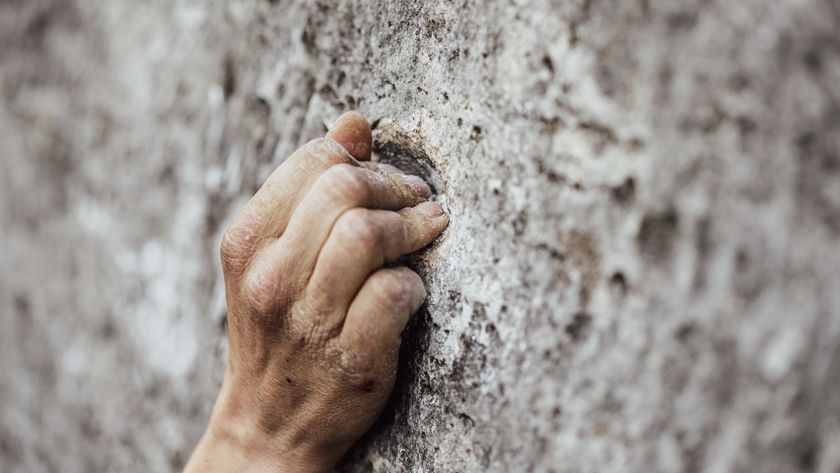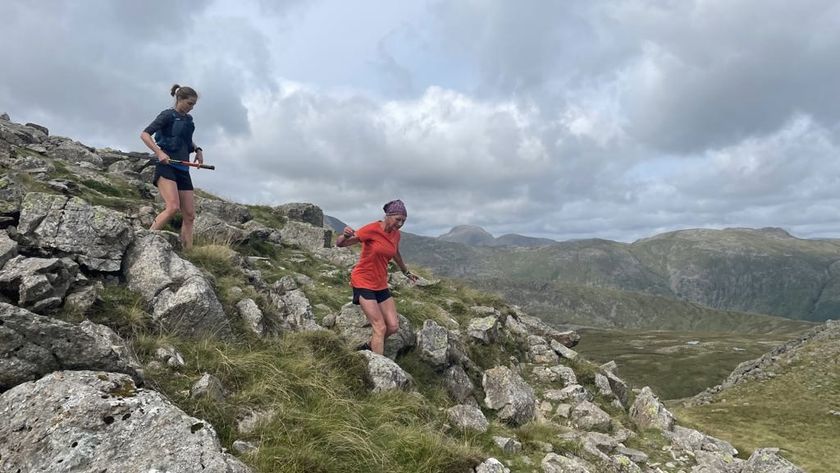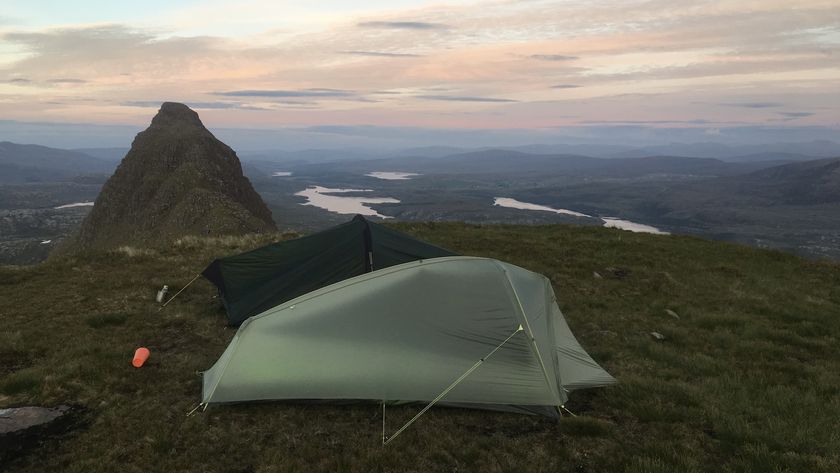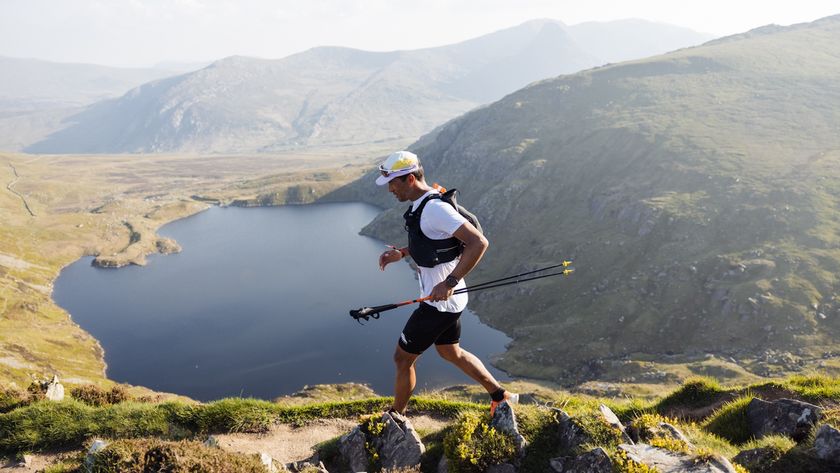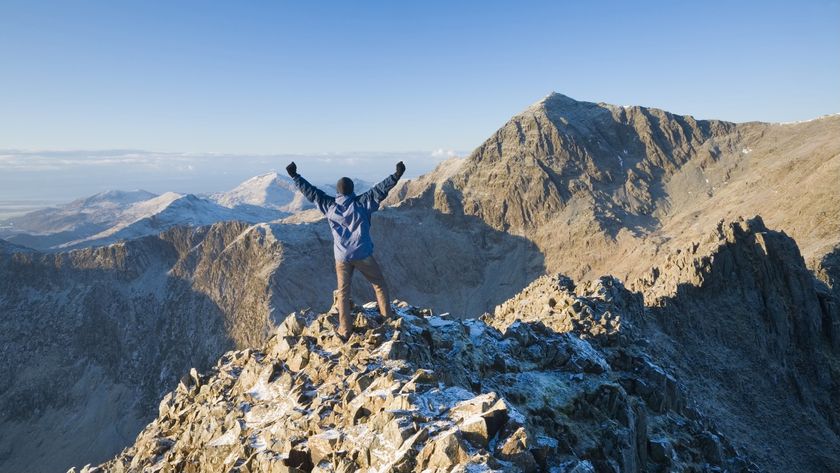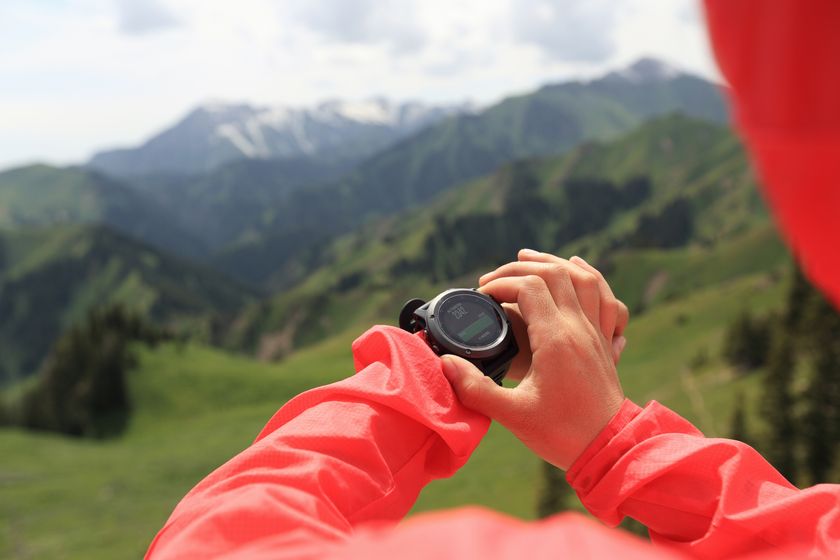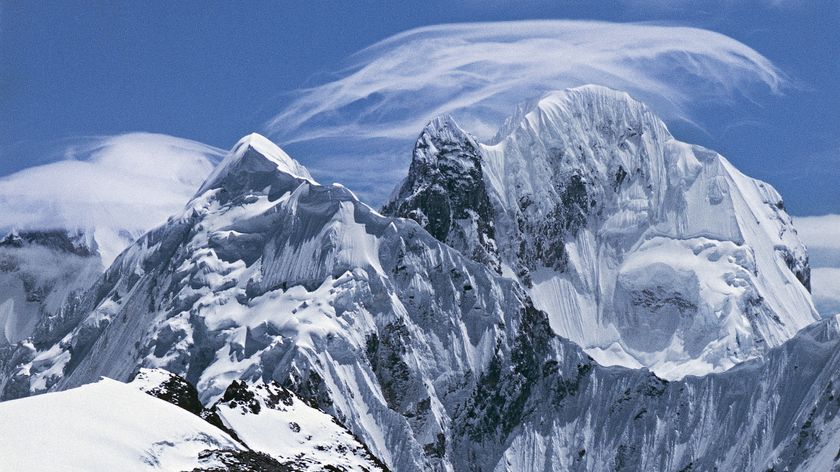What is the death zone on the world’s highest mountains?
Our mountaineering expert looks into the death zone and the reasons why climbing 8,000-meter peaks can be so dangerous
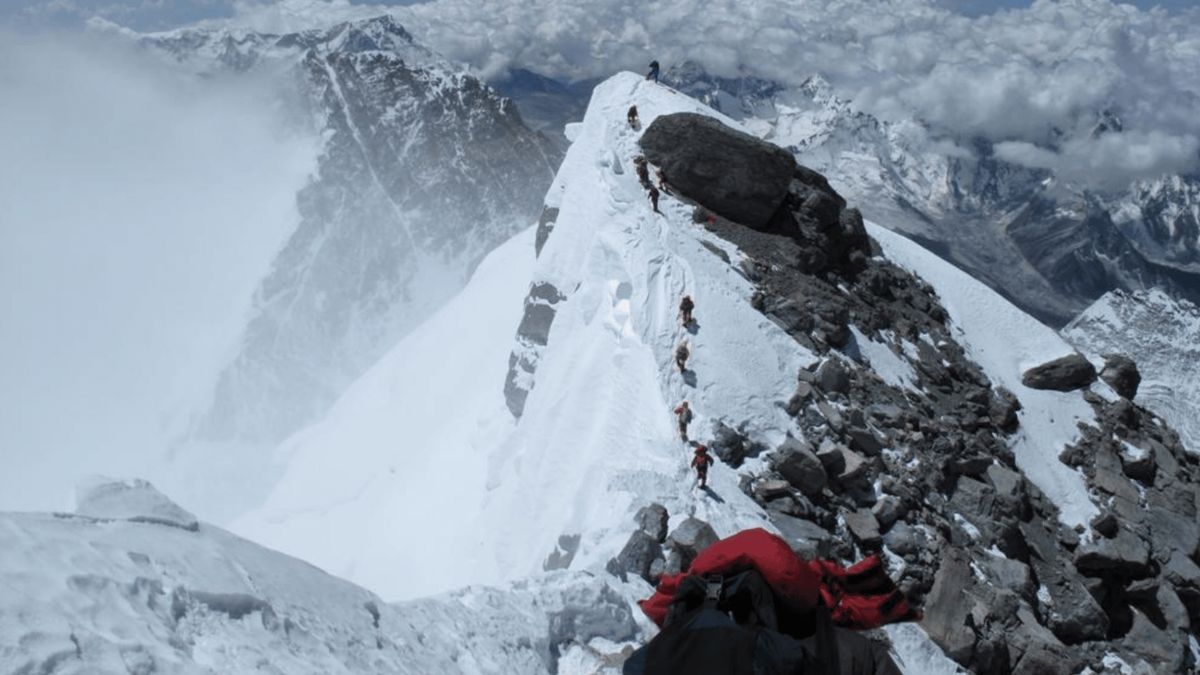
There are only 14 places on Earth where you can enter the death zone, places where the oxygen pressure is so low that there’s simply not enough to sustain human life beyond a matter of hours. These places only occur on the world’s 8,000-meter peaks: Shishapangma, Gasherbrum II, Broad Peak, Gasherbrum I, Annapurna I, Nanga Parbat, Manaslu, Dhaulagiri, Cho Oyu, Makalu, Lhotse, Kangchenjunga, K2 and Everest.
If you have ambitions to climb above 8,000 meters, you’ll have to grapple with the death zone. On Shishapagma or Gasherbrum II, your acquaintance with the death zone would be relatively brief, with “only” 27 and 35 meters respectively to contend with. However, to attain the 8,849 meter apex of Everest, there’s a full 849 meters within this rather frightening sounding zone standing between you and summit glory. To put that into context, that’s an elevation gain just 65 meters short of the height of El Capitan from base to summit.
So, what is the death zone and why is it so dangerous? What can be done to make it a little less deathly? We asked one of our mountaineering experts to delve into the science of extreme high altitude to answer these questions.
What is the death zone?
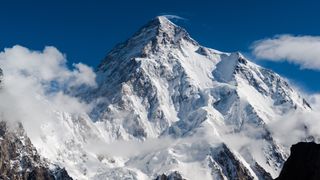
The death zone is a mountaineering term that refers to altitudes above which the oxygen pressure is too low for humans to survive beyond a short amount of time. The death zone is generally agreed to be at altitudes above around 8,000 meters.
The lack of oxygen available to the human body at these heights can lead to acute mountain sickness (AMS) and can be potentially fatal. Not only does the body come under great physical stress, but cognitive processes can also become impaired, leading to poor decision making and rash behaviour. Summit fever, the compulsion to ascend to the top of a mountain regardless of negative consequences, becomes more acute when decision making is compromised.
The term was first coined by Edouard Wyss-Dunant, the doctor who led the 1952 Swiss Everest Expedition. This expedition achieved a then-record altitude of 8,595 meters and helped pave the way for the successful British expedition to the summit the year after. Wyss-Dunant called everything above 8,000 meters the ‘lethal zone’ and at some point this became the 'death zone' in popular vernacular.
While it’s the lack of available oxygen that’s the most dangerous aspect of the death zone, other factors also include the freezing temperatures, strong ultraviolet radiation and extreme weather. Record wind speeds of 175mph have been recorded on Everest’s summit and speeds in excess of 100mph are commonplace. Meanwhile, temperatures at the top range from around -4° to -31 °F (-20° to -35°C) on average. The main weather window that climbers use is in May, when the winds die down enough to make summit bids possible before the monsoon sweeps in.
Advnture Newsletter
All the latest inspiration, tips and guides to help you plan your next Advnture!
It's a combination of the above factors that makes the top of Earth’s 8,000-metre peaks such dangerous places to be.
Meet the expert

Alex is a keen mountaineer and former President of the London Mountaineering Club. He’s happiest in either Scotland’s winter mountains or taking on Alpine 4,000ers on the European continent. He’s also something of an armchair mountaineer and revels in following the progress of the alpine elite.
How does being in the death zone affect the human body?
- Reduced oxygen can lead to acute mountain sickness
- Two of the worst conditions are high altitude cerebral and pulmonary edemas
- Symptoms include headaches, listlessness, cognitive impairment and vomiting
- Treatment includes descending, taking supplementary oxygen and using drugs like DEX
Most humans have evolved to thrive with the cozy 21 per cent atmospheric concentration of oxygen found at sea level. At higher altitudes, there are a number of weird things that happen to your body. Crucially, there’s much less oxygen available due to decreased atmospheric pressure. The body has to work harder to get the oxygen it needs, so breathing and heart rates increase, while non-essential body functions are put on the backburner.
The reduced oxygen at high altitude can lead to acute mountain sickness (AMS). States of hypoxia, where you body is deprived of the oxygen it needs, can lead to high-altitude cerebral edema (HACE) and high-altitude pulmonary edema (HAPE), two life-threatening conditions.
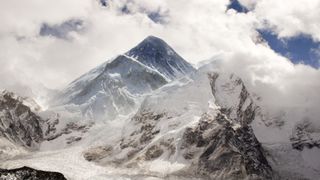
HACE is when the brain swells in response to the lack of oxygen. As you’re probably aware, your skull isn’t the most elastic part of your body, so there’s not actually that much room for a brain to balloon. This affects the body’s ability to function and causes a dangerous amount of pressure that prevents blood flow to this, your most vital organ. Symptoms include a headache, dizziness, nausea, vomiting, cognitive impairment, memory loss, difficulty speaking, listlessness and seizures. So, probably best avoided when you're 8,000-odd meters up in highly challenging mountain terrain.
HAPE is when fluid collects in the lungs at high altitude. The lack of oxygen can make breathing extremely difficult, which causes fluid to build up and, in the worst cases, bleeding to occur in the lungs. This, in turn, means your other organs don’t receive the oxygen they require to function normally. Symptoms include a dry cough that can evolve into a frothy, mucusy cough, shortness of breath, high heart rate, blue skin and a low fever. Again, not what you need when tackling the Hillary Step.
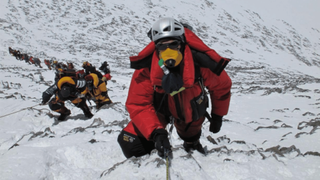
To treat conditions like HACE and HAPE, the casualty should be moved to a lower altitude, at least 1,000 metres lower than where the condition arose. Supplementary oxygen is also a huge help. For HACE, medications like acetazolamide and dexamethasone – often shortened to ‘DEX’ by alpinists – reduce the swelling in the brain. DEX and acetazolamide are often carried by high-altitude mountaineers for this very reason.
The use of these drugs raises a question in terms of mountaineering ethics. DEX is on the World Anti-Doping Agency’s 2024 prohibited substance list (albeit for competitive endeavors), yet both DEX and acetazolamide feature in the Wilderness Medical Society’s 2024 advice on avoidance of Acute Altitude Illness. Does it count as a first ascent if the mountaineer is aided by performance enhancing drugs? It’s an interesting debate.
How long can you spend in the death zone?
- The advice is that you should not spend more than 16 to 20 hours in the death zone
- 48 hours considered the limit for most, even with supplementary oxygen
- 21 hours is the record period spent by someone without supplementary oxygen
- 90 hours is the record with supplementary oxygen
Many of the world’s greatest mountaineers have reached 8,000-meter summits without using supplementary oxygen. Reinhold Messner was the first person in history to climb all 8,000-meter peaks without supplementary oxygen, finishing in 1986. So, clearly its possible to enter the death zone and come out alive multiple times. This begs the question: just how long can you spend in there?
The general advice given to climbers is to not spend any more than 16 to 20 hours in the death zone, while 48 hours is considered the upper limit for most, even with supplementary oxygen. It’s possible for humans to survive through the night, as famously proved by Walter Bonatti’s epic on K2 in 1954 or by Doug Scott and Dougal Haston’s forced bivouac during the 1975 British Mountain Everest Southwest Face expedition.
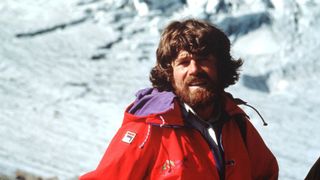
It's well documented that Sherpas have evolved to cope with altitude better than the average person. The records for the longest period in the death zone both with and without supplementary oxygen are held by Sherpas. In May 1999, Babu Chiri Sherpa spent 21 hours in the death zone without supplementary oxygen – an incredible feat of endurance. Tragically, he died on the mountain two years later when he fell into a crevasse. The record with supplementary oxygen is 90 hours, held by Pemba Gyalje, who heroically rescued two climbers during the 2008 K2 disaster, which claimed 11 lives. He was given one of National Geographic’s Adventurers of the Year awards for his efforts.
How do mountaineers acclimatize for 8,000-meter peaks?
- Ascending a mountain slowly gives mountaineers time to acclimatize
- Climb high, sleep low is the principle when climbing high mountains
- However, no amount of acclimatization can negate the risks of the death zone
- Staying hydrated is also key to avoid the effects of altitude
Kilimanjaro is one of the world’s Seven Summits. Africa’s loftiest stands proud as the highest free-standing mountain on the planet. Rising to 5,895 meters above sea level, this mighty, dormant volcano’s summit is some 2,105 meters shy of the death zone. Yet, its high altitude is still the main challenge posed to anyone ascending to its summit. This is why ‘pole pole’ is the key piece of advice local guides and porters reiterate to their clients. It means ‘slowly slowly’ in Swahili.
By ascending a high mountain slowly, the human body has time to adjust to the conditions, a process known as acclimatization. Various bodies recommend a rate of ascent in the region of 300 to 500 meters per day at higher altitudes, with the amount of ascent decreasing the higher you go. This makes reaching Everest, at 8,849 meters, quite a time-consuming task.
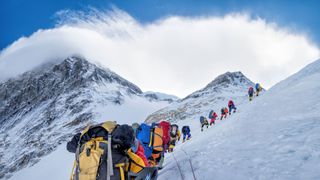
During an expedition on an 8,000-meter peak, a mountaineer will periodically climb high during the day and return to a lower camp to sleep. This is because the body recovers better at lower altitudes and acclimatizes better during exertion than when resting. So, when climbing a giant, the best advice is: climb high, sleep low.
The body makes a number of adaptations to cope with existence at higher altitudes than usual. The rate of respiration increases, expelling more carbon dioxide and lowering the amount contained in the blood. As well as this, the kidneys get rid of more fluid, sending more water to the bladder as urine, which has the effect of making the blood thicker. The production of red blood cells increases in an attempt to provide the individual with greater oxygen carrying capacity. This usually happens a week or two after first encountering higher altitudes.
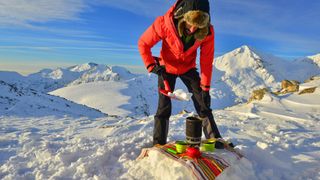
There’s a big but coming here... BUT! No amount of acclimatization can prepare the body for the death zone. Above 6,000 meters, the body never fully adjusts and above 8,000 meters it won’t survive for long – hence the death zone. This is the reason that summit bids are so carefully planned to be executed in the kindest (relative!) conditions possible so that mountaineers are into and out of the death zone as quickly as possible.
Staying hydrated is also key to avoiding issues caused by high altitude, which can be a huge challenge in high altitude environments where all the water has long since frozen. On expeditions, many hours are invested on the simple act of melting snow for drinking water. This takes time, as large amounts of energy are needed to break the bonds that hold snow together.
Alex is a freelance adventure writer and mountain leader with an insatiable passion for the mountains. A Cumbrian born and bred, his native English Lake District has a special place in his heart, though he is at least equally happy in North Wales, the Scottish Highlands or the European Alps. Through his hiking, mountaineering, climbing and trail running adventures, Alex aims to inspire others to get outdoors. He's the former President of the London Mountaineering Club, is training to become a winter mountain leader, looking to finally finish bagging all the Wainwright fells of the Lake District and is always keen to head to the 4,000-meter peaks of the Alps. www.alexfoxfield.com




